SAT (Scholastic Assessment Test) is a standard test, used for taking admission to undergraduate programs of universities or colleges of the United States. SAT is developed and published by the College Board, an organization in the United States, administered by the Educational Testing Service. In this article of AKVTutorials, you will get SAT Reading Practice Test 32 | SAT 2024 Online Tutor AMBiPi.
SAT Reading Practice Passage
This passage is adapted from David Rotman, “How Technology Is Destroying Jobs.” ©2013 by MIT Technology Review.
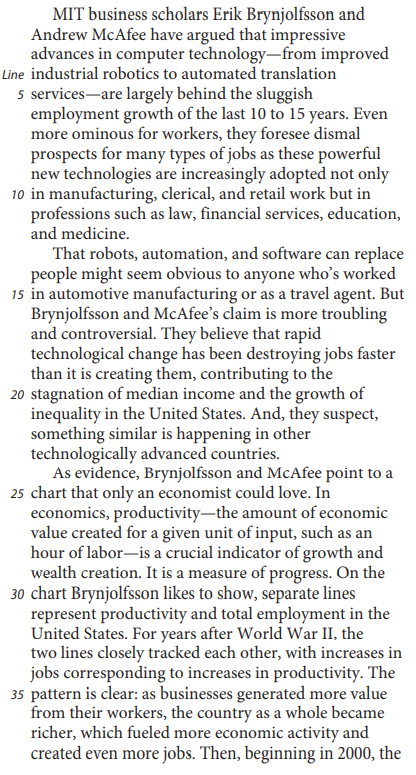
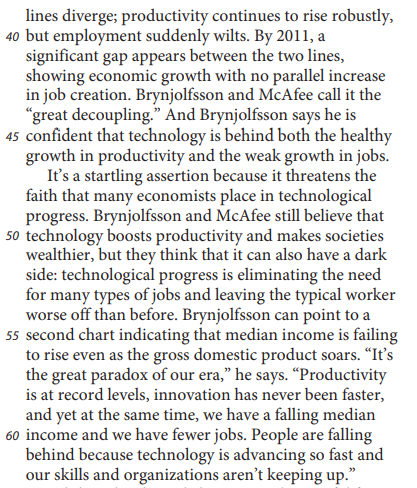
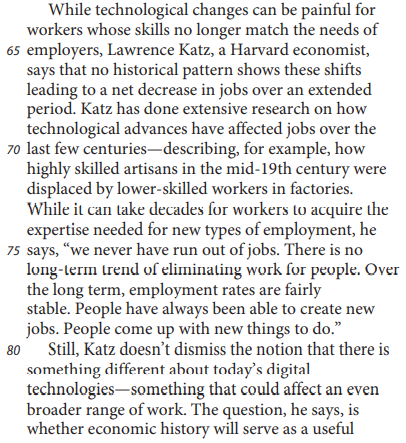
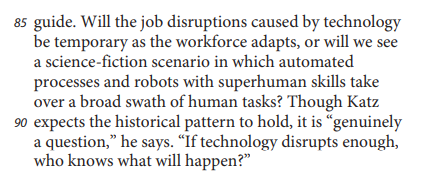
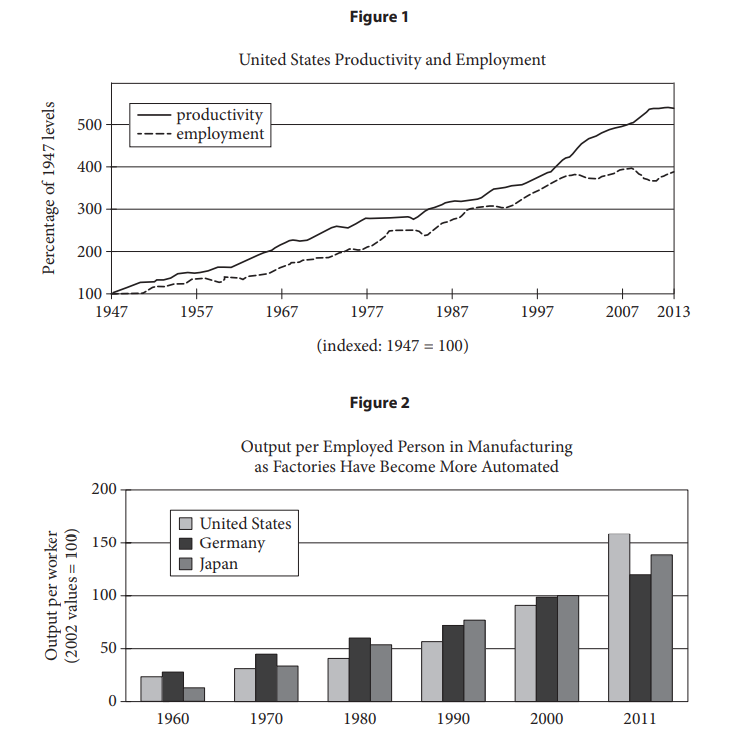
SAT Reading Comprehension Practice Test Questions
SAT Practice Test 32 Question No 1
The main purpose of the passage is to
Option A: examine the role of technology in workers’ lives during the last century.
Option B: advocate for better technology to enhance workplace conditions.
Option C: argue for changes in how technology is deployed in the workplace.
Option D: assess the impact of advancements in technology on overall job growth.
SAT Practice Test 32 Answer No 1
Show/Hide Answer
Option D :
The first paragraph of the passage explains the theory of two MIT business scholars who believe that technological advances in the workplace could lead to fewer jobs for human workers, explaining that they “foresee dismal prospects for many types of jobs as these powerful new technologies are increasingly adopted not only in manufacturing, clerical, and retail work but in professions such as law, financial services, education, and medicine.” The fifth paragraph of the passage, however, offers a contrasting view, citing a Harvard economist who “says that no historical pattern shows these shifts leading to a net decrease in jobs over an extended period.” Combined, these different opinions indicate the main purpose of the passage, which is to assess how new technologies in the workplace might affect job growth as a whole.
Choice A is incorrect because the passage does not examine how workers’ lives have been affected by technology during the last century. Choices B and C are incorrect because the passage does not advocate or argue for a course of action; instead, the passage considers both sides of an issue, taking no position of its own.
SAT Practice Test 32 Question No 2
According to Brynjolfsson and McAfee, advancements in technology since approximately the year 2000 have resulted in
Option A: low job growth in the United States.
Option B: global workplace changes.
Option C: more skilled laborers in the United States.
Option D: no global creation of new jobs.
SAT Practice Test 32 Answer No 2
Show/Hide Answer
Option A :
In the first paragraph of the passage, Brynjolfsson and McAfee clearly state that technological advances since the year 2000 have led to low job growth in the United States: “MIT business scholars Erik Brynjolfsson and Andrew McAfee have argued that impressive advances in computer technology — from improved industrial robotics to automated translation services — are largely behind the sluggish employment growth of the last 10 to 15 years.”
Choice B is incorrect because although Brynjolfsson and McAfee assert that certain “changes” have occurred in the workplace as a result of technological advancement, they offer only tentative speculation that those changes may be reflected globally. Choice C is incorrect because the passage notes a decrease, rather than an increase, in skilled laborers. Choice D is incorrect because the passage makes no mention of the global creation of new jobs, even speculating that jobs may have been negatively impacted in technologically advanced nations.
SAT Practice Test 32 Question No 3
Which choice provides the best evidence for the answer to the previous question?
Option A: Lines 1-6 (“MIT… years”)
Option B: Lines 13-15 (“That… agent”)
Option C: Lines 21-23 (“And… countries”)
Option D: Lines 35-38 (“as businesses… jobs”)
SAT Practice Test 32 Answer No 3
Show/Hide Answer
Option A :
The previous question asks what Brynjolfsson and McAfee say has resulted in the workplace from advances in technology since the year 2000. The answer, that low job growth has resulted from these advances, is supported in the first sentence of the first paragraph: “MIT business scholars Erik Brynjolfsson and Andrew McAfee have argued that impressive advances in computer technology — from improved industrial robotics to automated translation services — are largely behind the sluggish employment growth of the last 10 to 15 years.”
Choices B, C, and D are incorrect because the lines cited do not support the answer to the previous question about what Brynjolfsson and McAfee say has resulted in the workplace from advances in technology since the year 2000; instead, they point to industries not under specific consideration by Brynjolfsson and McAfee (choice B), speculate as to whether changes might also be happening in other countries (choice C), and explain the importance of productivity in the marketplace in the decades following World War II. (choice D).
SAT Practice Test 32 Question No 4
The primary purpose of lines 26-28 (“the amount…labor”) is to
Option A: describe a process.
Option B: highlight a dilemma.
Option C: clarify a claim.
Option D: explain a term.
SAT Practice Test 32 Answer No 4
Show/Hide Answer
Option D :
The second sentence of the third paragraph reads, “In economics, productivity — the amount of economic value created for a given unit of input, such as an hour of labor — is a crucial indicator of growth and wealth creation.” In this context, the primary purpose of the appositive (“the amount of economic value . . . such as an hour of labor”) is to define “productivity.”
Choices A, B, and C are incorrect because in the context of the third paragraph, the appositive (“the amount of economic value . . . such as an hour of labor”) is clearly provided to help explain the term “productivity,” not to describe a process (choice A), highlight a dilemma (choice B), or clarify a claim (choice C).
SAT Practice Test 32 Question No 5
As used in line 35, “clear” most nearly means
Option A: pure.
Option B: keen.
Option C: untroubled.
Option D: unmistakable.
SAT Practice Test 32 Answer No 5
Show/Hide Answer
Option D :
The third paragraph states that “the pattern is clear: as businesses generated more value from their workers, the country as a whole became richer.” In this context, the word “clear” most nearly means obvious, or unmistakable.
Choices A, B, and C are incorrect because in the context of the third paragraph, the word “clear” can be seen to mean obvious, or unmistakable, not pure (choice A), keen (choice B), or untroubled (choice C).
SAT Practice Test 32 Question No 6
Which of the following best characterizes Katz’s attitude toward “today’s digital technologies” (lines 81-82)?
Option A: He is alarmed about countries’ increasing reliance on them.
Option B: He is unconcerned about their effect on the economy.
Option C: He is uncertain how they might affect job growth.
Option D: He is optimistic that they will spur job creation to a degree not seen since the mid-nineteenth century.
SAT Practice Test 32 Answer No 6
Show/Hide Answer
Option C :
Katz doesn’t necessarily agree with Brynjolfsson and McAfee that new technologies will lead to sluggish job growth, saying in the fifth paragraph that “no historical pattern shows these shifts leading to a net decrease in jobs over an extended period.” However, he’s not sure that will remain true, explaining in the sixth paragraph that no one can be certain what is going to happen to the workplace as a result of these new technologies: “If technology disrupts enough, who knows what will happen?”
Choices A, B, and D are incorrect because it would not be accurate to characterize Katz as being alarmed (choice A), unconcerned (choice B), or optimistic (choice D) about today’s digital technologies. Rather, it’s clear from the conclusion of the sixth paragraph that Katz isn’t sure how technological advancement will affect the workplace: “If technology disrupts enough, who knows what will happen?”
SAT Practice Test 32 Question No 7
Which choice provides the best evidence for the answer to the previous question?
Option A: Lines 68-72 (“Katz… factories”)
Option B: Lines 73-75 (“While… jobs”)
Option C: Line 79 (“People come… do”)
Option D: Lines 91-92 (“If… happen”)
SAT Practice Test 32 Answer No 7
Show/Hide Answer
Option D :
The previous question asks how Katz’s attitude toward “today’s digital technologies” can best be characterized. The answer, that he is uncertain about their possible effects, is supported in the final sentence of the sixth paragraph: “If technology disrupts enough, who knows what will happen?”
Choices A, B, and C are incorrect because the lines cited do not support the answer to the previous question Katz’s attitude toward “today’s digital technologies”; instead, they describe some of his earlier research (choice A) and provide insight only into his initial thoughts but not his final conclusion on the matter (choices B and C).
SAT Practice Test 32 Question No 8
As used in line 83, “range” most nearly means
Option A: region.
Option B: scope.
Option C: distance.
Option D: position.
SAT Practice Test 32 Answer No 8
Show/Hide Answer
Option B :
The sixth paragraph of the passage states that “Katz doesn’t dismiss the notion that there is something different about today’s digital technologies — something that could affect an even broader range of work.” In the context of this sentence, the “range” of work being discussed means the scope of work or all the various kinds of work.
Choices A, C, and D are incorrect because in the context of the sentence, the “range” of work being discussed means the array or scope of work, not a physical delineation like a region (choice A) or distance (choice C), or the professional position of those who perform particular jobs (choice D).
SAT Practice Test 32 Question No 9
According to figure 1, which of the following years showed the widest gap between percentages of productivity and employment?
Option A: 1987
Option B: 1997
Option C: 2007
Option D: 2013
SAT Practice Test 32 Answer No 9
Show/Hide Answer
Option D :
Figure 1 shows the highest gap between the percentages of productivity and employment in relation to 1947 levels occurring in 2013, when there was a difference of approximately 150 percentage points between 2013 employment (under 400%) and 2013 productivity (well over 500%).
Choices A, B, and C are incorrect because Figure 1 shows a gap of well over 100 percentage points between 2013 employment and 2013 productivity in relation to 1947 levels, while 1987 (choice A) and 1997 (choice B) show a difference of about 30 percentage points or less between employment and productivity, and 2007 (choice C) indicates a difference of approximately 100 percentage points.
SAT Practice Test 32 Question No 10
Which statement is supported by figure 2?
Option A: The country with the greatest growth in output per manufacturing worker from 1960 to 1990 was Germany.
Option B: Japan experienced its smallest increase in output per manufacturing worker from 2000 to 2011.
Option C: Each of the three countries experienced an increase in its output per manufacturing worker from 1960 to 2011.
Option D: Of the three countries, the United States had the greatest output per manufacturing worker for each of the years shown.
SAT Practice Test 32 Answer No 10
Show/Hide Answer
Option C :
Figure 2 clearly shows an increase of worker output in all three countries between 1960 and 2011, with workers in each country producing on average less than 50 units of output in 1960 but more than 100 units by 2011.
Choice A is incorrect because figure 2 shows that Japan saw greater growth in output between 1960 and 1990 than Germany saw. Choice B is incorrect because figure 2 shows that Japan experienced its greatest increase in output from 2000 to 2011, not its smallest. Choice D is incorrect because figure 2 shows that the United States had the greatest output of all three countries only in 2011, not in each of the years shown.



